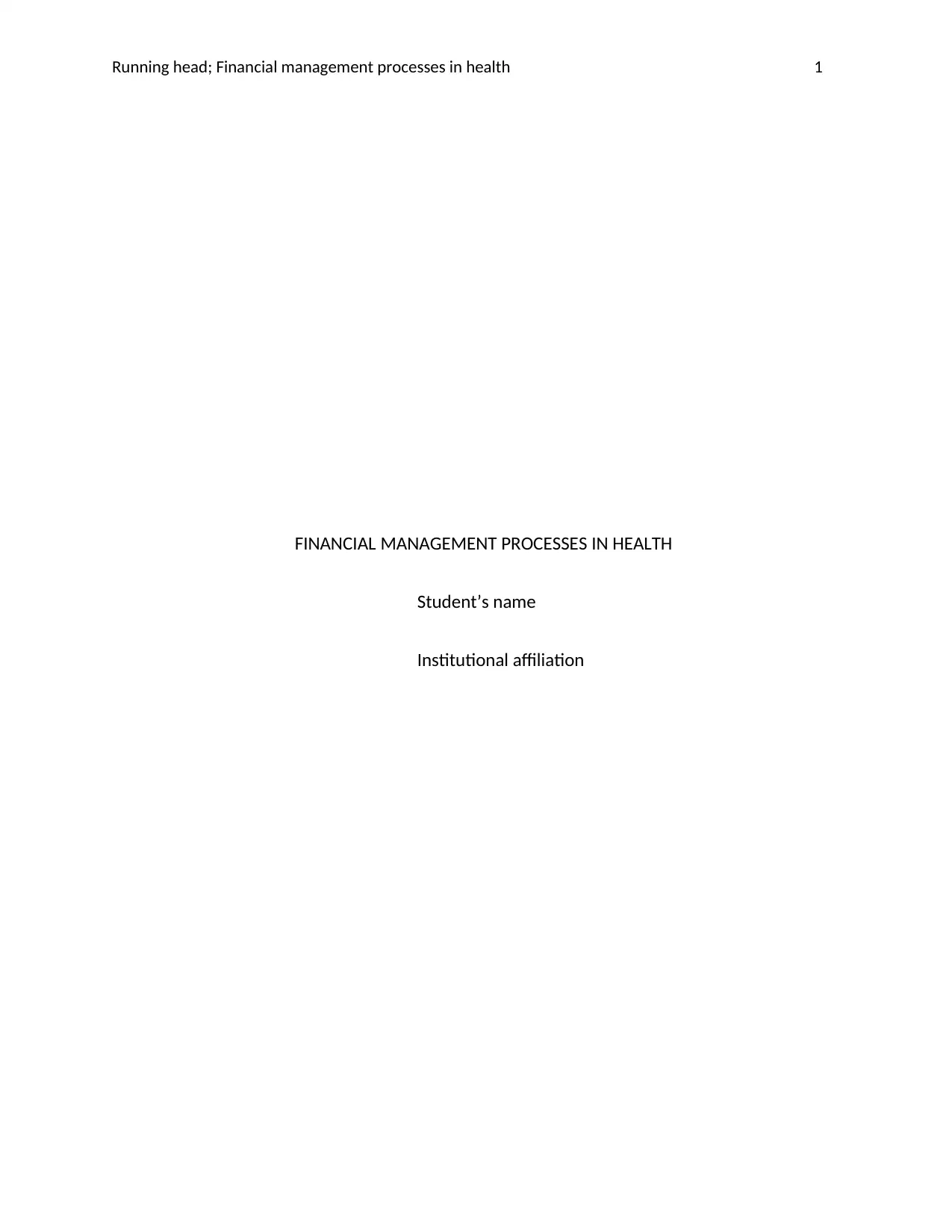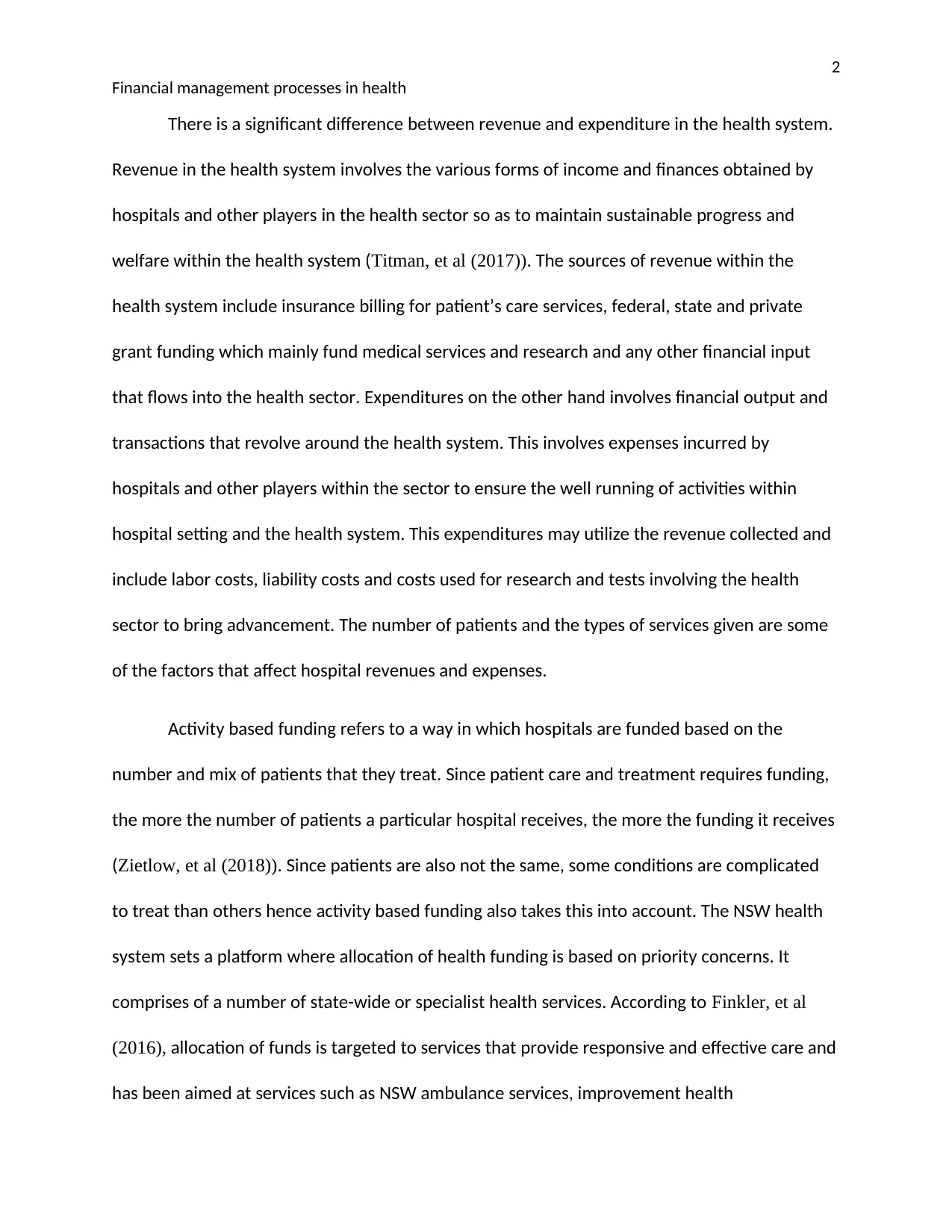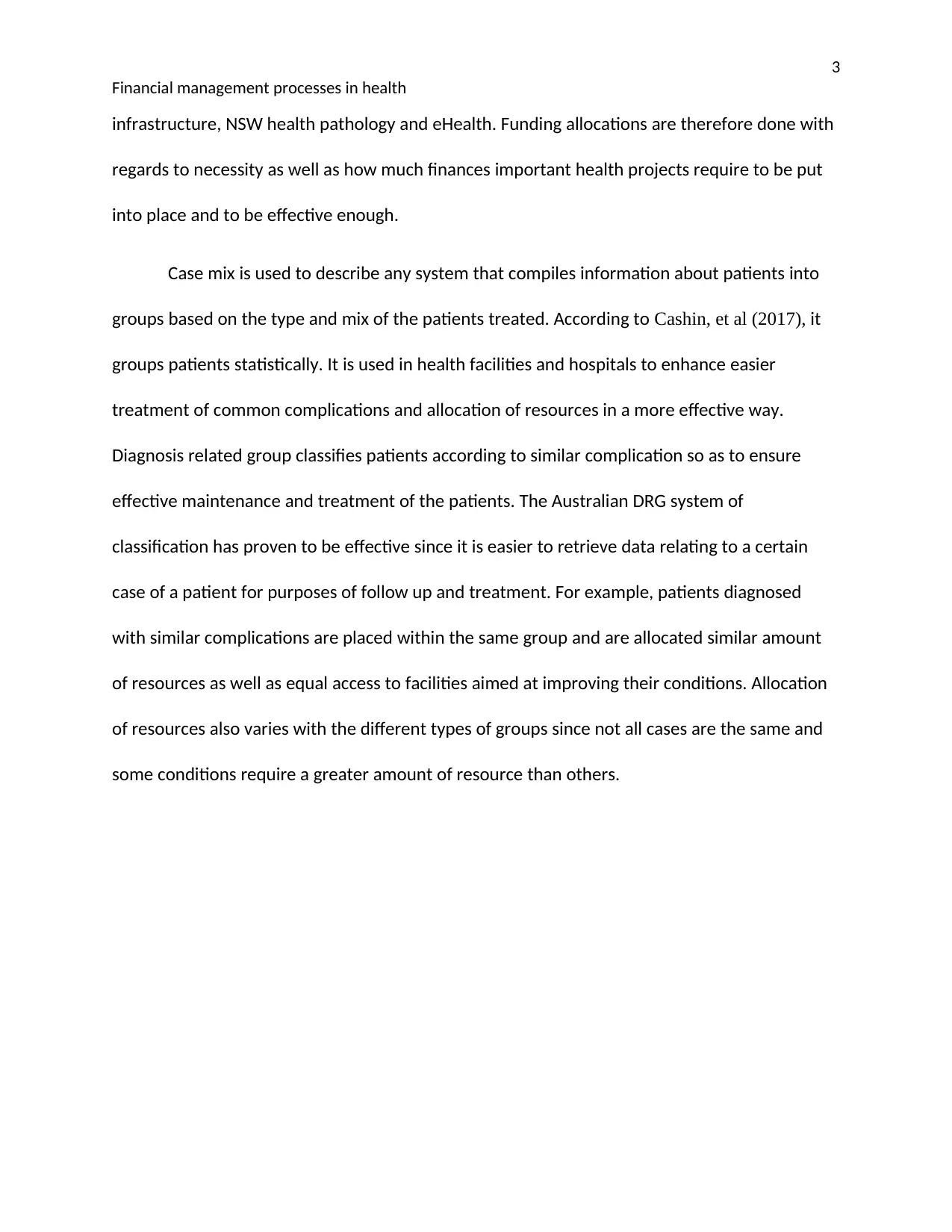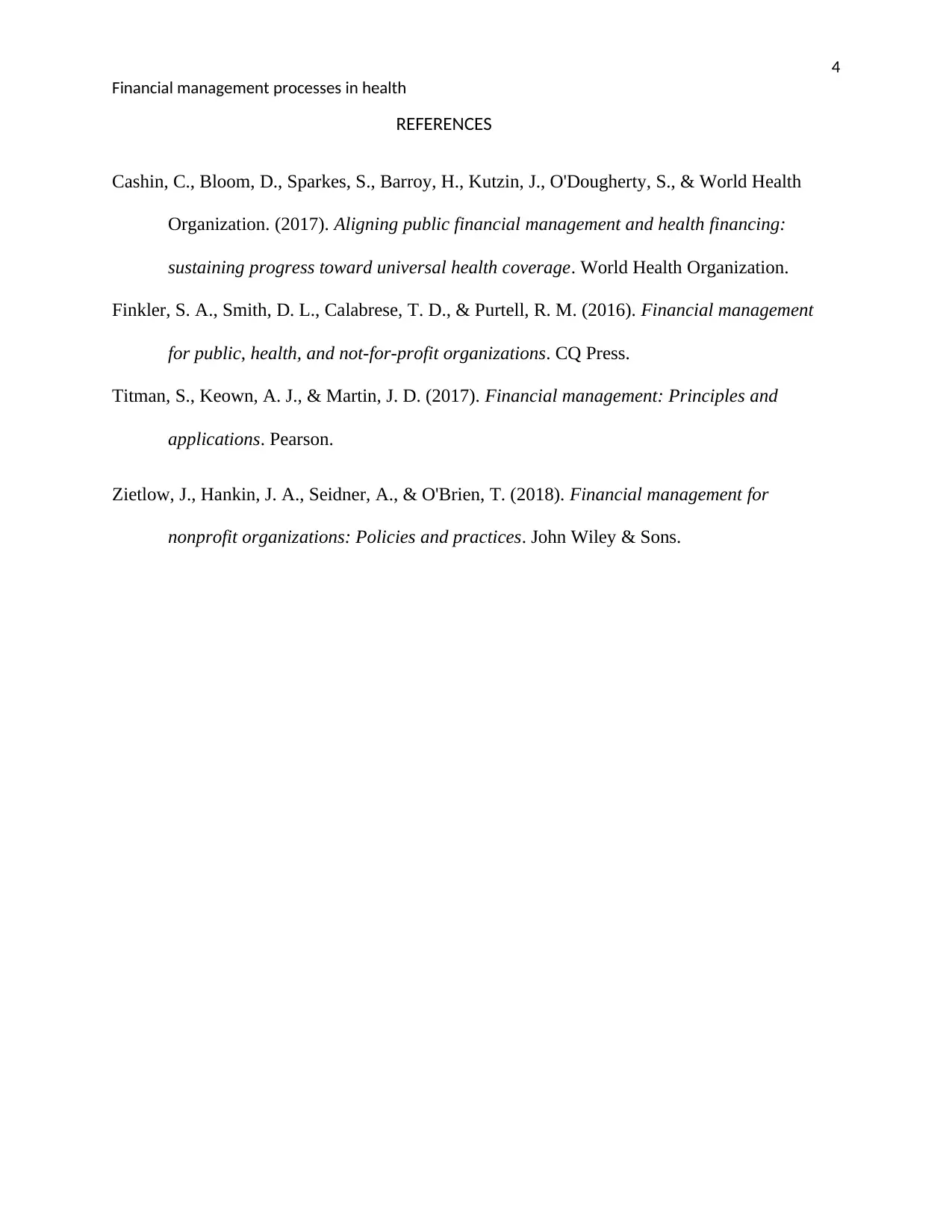Analyzing Financial Management Processes in the NSW Health System
VerifiedAdded on 2023/06/12
|4
|766
|197
Homework Assignment
AI Summary
This assignment delves into the financial management processes within the health system, focusing on the differences between revenue and expenditure. Revenue sources include insurance billing and grants, while expenditures cover labor, liability, and research costs. Activity-based funding, where hospitals are funded based on the number and complexity of patients they treat, is discussed with a specific focus on how the NSW Health System allocates funds based on priority concerns like ambulance services and infrastructure. The assignment also explains case mix and the Australian DRG system, which classifies patients into groups based on similar complications to enhance treatment and resource allocation. The DRG system's effectiveness in data retrieval and resource allocation is highlighted, emphasizing its role in improving patient care and outcomes. Desklib provides access to similar solved assignments and resources for students.
1 out of 4









![[object Object]](/_next/static/media/star-bottom.7253800d.svg)